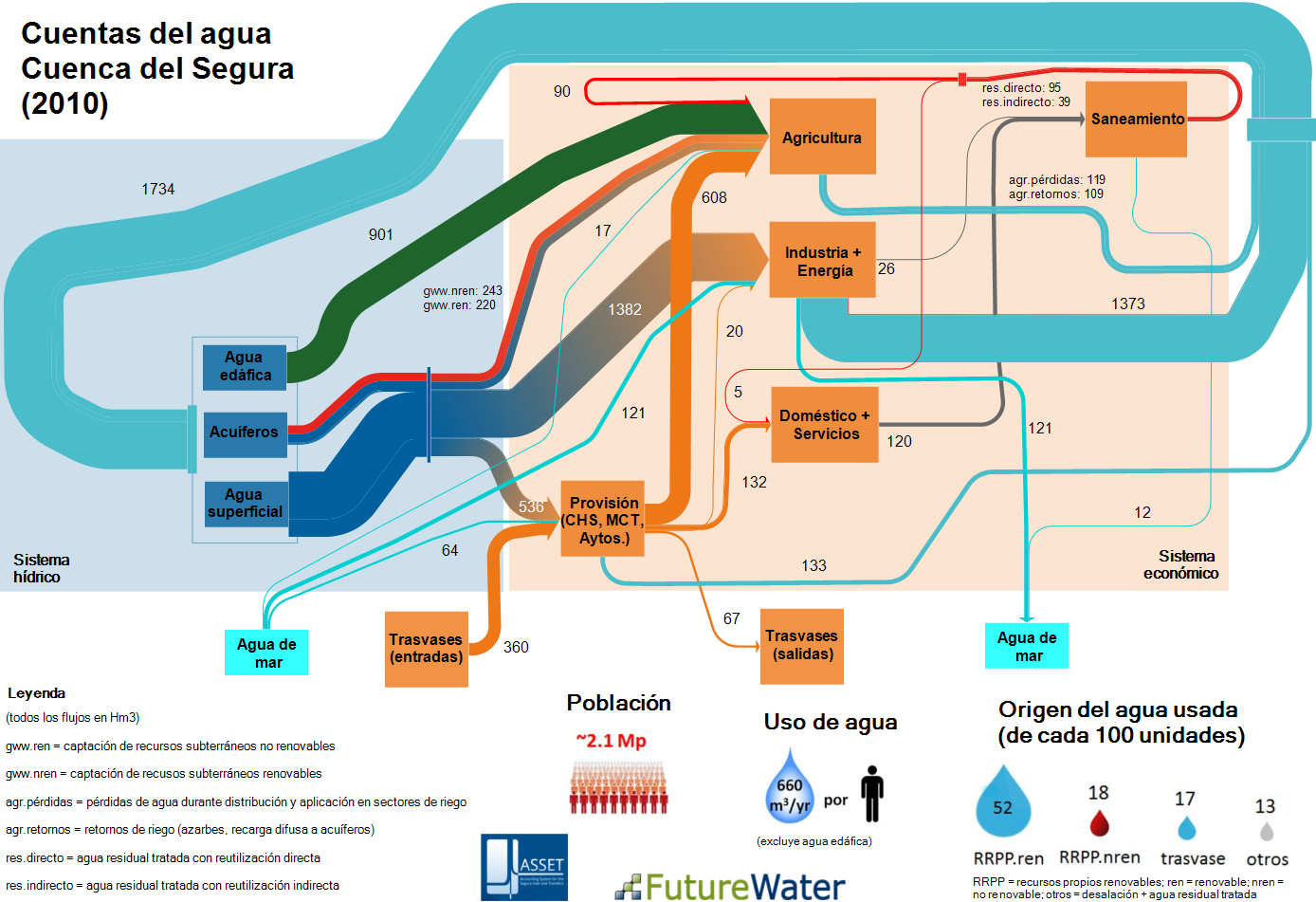Here is a good example of how Sankey diagram and pie chart are used side-by-side. In fact, the Sankey diagram picks up one particular piece of information that is already in the Sankey diagram.
This is from a German research report titled ‘Entwicklung eines EnergieReduzierten Verfahrens für den Erwärmungs- und Umformungsprozess von Parabel-Lenkerfedern durch Verkürzung der Verfahrenskette („EnRed“)’ published in 2010. [Note: no English abstract present, but title translates to sth like ‘Development of an energy-reduced process for heating and forming of…’ and from what I understand it is a hot rolling process]
It compares a conventional process with a new, energy reduced process. Here is the Sankey diagram for the conventional process and the pie chart right below.
The unit is kWh/kg, primary energy per kg of final product. The three colors are picked up again in the pie chart that shows the breakdown of primary energy lost in the provision of heat (brown, 12.3%) and in the ovens (red, 74.3%). Only 13.4% of the primary energy is actually used for heating of the rolled material (yellow).
Now, the pieces of the pie chart correspond to the widths of the brown, red and yellow output arrows as part of the primary energy input at the left. We are, however, typically much more used to percentages being represented in a pie chart.
A nice detail in the Sankey diagram is the split for the three ovens and the losses from the three ovens (red). The flows run in parallel and then are joined again at a bar that reminds me of a bridge, or the nut of a guitar … or the Brandenburg gate turned sideways as my nephew suggested 😉
